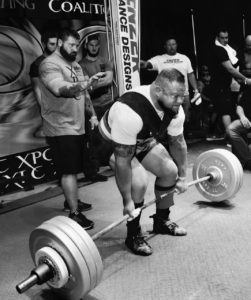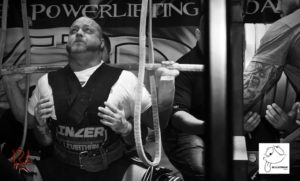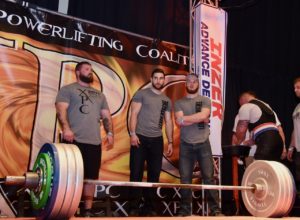21 Mar Weightlifting Lessons That Made My Powerlifting Better
By: Derek Wilcox
The Importance Of Back Rigidity And Stability.
In both sports maintaining an extremely rigid arch is vital for squatting or pulling efficiently to make sure you’re lifting what you should be lifting. Go to either style of competition and watch someone miss a squat or miss a clean in the bottom. Generally once you see the hips tuck under (posterior pelvic rotation) on a near maximum effort lift, they’re pretty much done.
[wa-wps]The butt shoots up in the air followed by “TAKE IT TAKE IT!” If your mechanics are off it doesn’t matter how big your muscles are, you can still get beaten by someone who is 50+lbs smaller, or in the case of weightlifting a 118 pound, 12 year old Chinese girl on the youth national team. If you’re happy with lifting what you do with compromised technique at the depth you need to hit then I’m happy for you, success just isn’t for everyone.
Shoulder Flexibility Keeps A Lot of Nagging Issues Away.
I was plagued for years with inner elbow pain and forearm pain while I benched. To the point where training would get cut short as soon as it started because the inflammation inhibited anything that resembled performance. I had to work hard on shoulder and forearm flexibility to hold a rack position on cleans especially. Magically, my elbow pain went away on every movement that had been hurting it before for years.
This problem is caused by a chronic tightness in the internal rotators of the rotator cuff muscles. If they refuse to stretch when you get wedged under a bar for squats, then the next weakest link in the chain is the ligaments in the elbow. Inflammation and instability of the joint follow over time until you find a way to take stress off of that area. External shoulder rotation stretches will do the trick and within a few weeks the elbow will be noticeably less stressed. That means you can hold a tighter grip under a heavy squat and be more stable.

The Hook Grip!
I transitioned to pulling my deadlifts with a hook grip a few years back and love it for two main reasons.
- Shortens range of motion.
- Keeps the stress on the musculature of the back even and symmetrical, which helps prevent imbalance issues.
It also eliminates the chance of tearing your bicep, but not deadlifting in a mid-bent over row position helps that as well. It certainly takes a while to get used to, but I literally do everything with a hook grip; deadlift, clean, snatch, throw weights in highland games, carry groceries, start the car and carpentry work just to name a few.
The old question of “doesn’t it hurt like hell?” comes up all the time, but it’s pretty quick to get used to it compared to learning how to squat or many other things training wise, and then you never hardly notice it. There are exceptions of people with super meaty hands not having the space to pull off a hook grip real well. Though when Naim Suleymanoglu can hold onto a bar normally a little bigger than a deadlift bar at 4’10 there’s usually a way to pull it off for the rest of us!
So the lesson here is there’s something to learn from just about everything you experience, whether it’s what to do or what not to do. You just need the experience, wisdom and occasionally lack of better judgment to apply it to a new arena.
Get The 10/20/Life Ebook HERE!
Derek Wilcox
Latest posts by Derek Wilcox (see all)
- Derek Wilcox: Strong(ish) Garagebell Chronicles: Powerlifter In A Weightlifting Meet! - May 3, 2018
- Derek Wilcox: Strong(ish) Garagebell Chronicles: Getting Leaner, Stronger And Out Of Breath! - March 27, 2018
- Derek Wilcox: Strong(ish) Garagebell Chronicles: Weightlifting Offseason Activities - March 13, 2018








Sorry, the comment form is closed at this time.